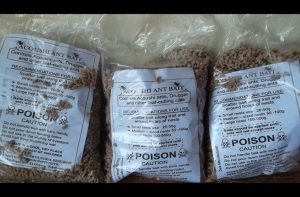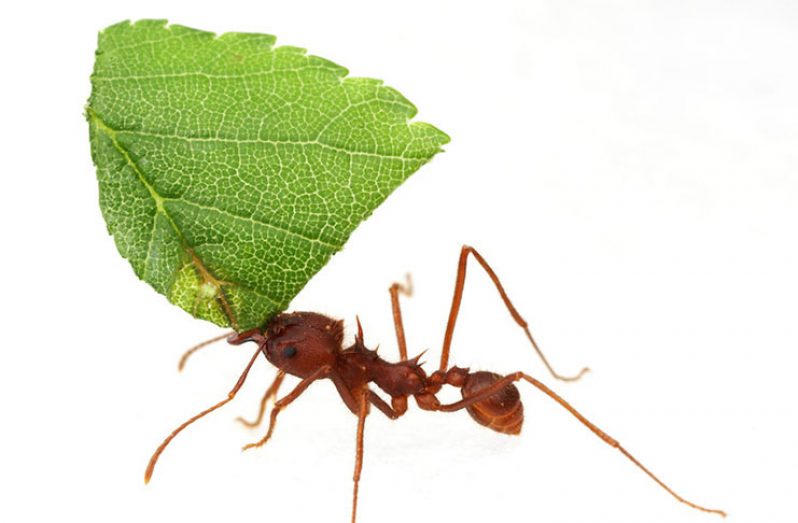The National Agricultural Research and Extension Institute (NAREI)’s Plant Pathology, Entomology and Weed Science Department is currently researching and developing effective bio-pesticides to combat Acoushi Ants.
NAREI had successfully developed Acoushi Ants bait several years ago. This bait is being distributed free of cost to farmers. However, before the ants become immune to the existing bait NAREI is developing alternative baits and comparing their effectiveness to those that are already on the market.
By incorporating botanicals and varying active ingredients, the Institute is expected to formulate a better way to manage the Achoushi Ant populations. Botanical materials from Citrus, Neem and Eucalyptus, to mention a few, will be incorporated into the locally produced ant bait.
All enhanced bait treatments are to be tested in open fields at different time intervals. Parameters such as bait attractiveness evaluated by checking the amount of visits to each will be set. Tests are to be carried out in varying Regions to evaluate the efficiency of these materials.
In Guyana locally manufactured baits are used, which is manufactured using flour and wheat brand as carriers and contains fipronil as its active ingredient. As bait efficacy and bait preference tends to change over time there is a need to keep observing and varying treatment to achieve the most effective results.
Among potentially cost-effective and environmental friendly alternatives to synthetic insecticides are the botanical extracts, which can be toxic to workers of leaf-cutting ants, their fungi, or to both. Plant derived products represent an interesting target for new technology for ant control.
Among distinct control methods, granulated toxic baits (pellets) are widely used and constituted by an insecticide with delayed action as active ingredient and an attractive substrate. This attractiveness is important in guaranteeing that a high percentage of the applied bait is transported into the colony, guaranteeing the efficacy of this method.
These leaf-cutting ants are considered one of the main agricultural and forest pests in Guyana. They are known to attack plants at any stage of their development, cutting their leaves, flowers, buds, and branches, which are then transported to the interior of their underground nest. This plant material is not utilized directly as food, rather, it is used as a substrate for a fungus which the ants cultivate and consume.
The fact that the vegetation is used only as base material for the insects’ only food the fungus allows them to exploit a wide range of plant species. A colony of Atta sp. can cut approximately 5 kg of plant material per day. Thus, these ants cause direct losses, such as the death of seedlings and reduction of tree growth. They can remove up to 15% of the standing leaf crop.












